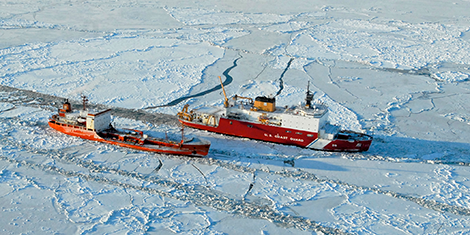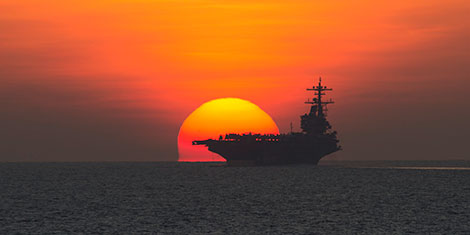
Tag: Naval Strategy

This article was originally published by the Wilson Center’s Environmental Change and Security Program (ECSP) on 26 April 2018.
When Secretary of the Navy Richard Spencer told the media last week that “the damn thing melted,” he wasn’t talking about an ice cream cone. As the Arctic faces unprecedented levels of open water, Spencer and other naval leaders recently testified to Congress about the U.S. Navy’s strategy, which is changing as quickly as the Arctic itself.

This article was originally published by War on the Rocks on 5 January 2018.
The 2017 National Security Strategy is a statement of Trump administration priorities, and its central tenets can be directly traced to statements made by Donald Trump on the campaign trail, albeit now framed in more genteel terms. National security experts are busily analyzing the strategy to discern its insights, pivots, oversights, inconsistencies, and priorities. This essay, however, concerns itself solely with the strategy’s implications for American seapower.

This article was originally published by the Institute for Strategic, Political, Security and Economic Consultancy (ISPSW) in January 2018.
Summary
The systems and networks naval forces must protect are complex and large in size. Ships are increasingly using systems that rely on digitization, integration, and automation. Offensive actors understand the naval reliance on communications, ISR, and visualization technologies, and perceive them as vulnerable to disruption and exploitation. Cyber has been moving from a supportive to a rather active role within an operational force. With today’s rapidly evolving threats, naval forces are well advised to develop a sense of urgency not only to develop cyber resilience capabilities that will enable them to “fight through”, but also cyber warfighting capabilities as these will be particularly valuable when they can be delivered reliably and in concert with other capabilities.

This article was originally published by War on the Rocks on 19 April 2017.
Trying to understand the military behavior of nations has been a hobby of Western academics, beginning with the great geopoliticians of former centuries, such as Nicholas Spykman, Sir Halford Mackinder, and Admiral Alfred Thayer Mahan. Simply, the argument is that geography demanded that insular and coastal nations such as England, Japan, and the Netherlands develop strong navies to support their national economic and political interests. Conversely, Germany, the Turkish Republic, and the Roman Empire were required to use their formidable land armies to defend and expand their territories. Russia stands out as a one-off. Situated squarely on the borders of Eastern Europe and central Asia, she endured numerous land assaults, and, accordingly built large defensive and offensive land armies. However, in fits and starts, she has also assembled naval forces equal to or greater than most of her presumptive adversaries. Why does Russia, a traditional land power, engage in such counterintuitive and unique behavior? Do recent international events shed light on Russia’s future naval activities?
When Tsar Peter the Great embarked on building a navy 330 years ago, he did so to defend the homeland from Swedish and Turkish enemies, north and south, while at the same time buying Russia a seat at the “great power” diplomatic table. Serendipitously, his navy did enable him to expand Russian boundaries and give him access to the world’s oceans. A second noteworthy Russian foray into the sea was at the height of the Cold War when Soviet Adm. Gorshkov planned and built a naval force that rivalled American supremacy at sea. His submarines alone (385) outnumbered those of the NATO Alliance and they regularly patrolled off the American Atlantic and Pacific coasts until the fall of the Soviet Union. On the surface of the oceans, it was commonplace for U.S. warships visiting exotic ports around the world to be joined by their Soviet counterparts throughout the Cold War.
